Here is an example table:
CREATE TABLE Example
(
LastName varchar(255),
FirstName varchar(255),
HomeAddress varchar(255),
City varchar(255)
);
INSERT INTO Example VALUES ('Murphy', 'James','123 Easy St', 'New York');
INSERT INTO Example VALUES ('Black', 'John','123 Easy St', 'Boston');
INSERT INTO Example VALUES ('Black', 'Amy','123 Easy St', 'Chicago');
INSERT INTO Example VALUES ('Simpson', 'Bill','123 Easy St', 'New York');
INSERT INTO Example VALUES ('Jones', 'James','123 Easy St', 'Chicago');
INSERT INTO Example VALUES ('Black', 'John','123 Easy St', 'Boston');
INSERT INTO Example VALUES ('Murhpy', 'James','123 Easy St', 'New York');
I want to be able to count by two columns, 'LastName' and 'City'. That is - I want this:
Name New York Boston Chicago
-------------------------------------
Jones 0 0 1
Black 0 2 1
Simpson 1 0 0
Murphy 2 0 0
My question is similar to this question. I created the following, which produces very close results:
DECLARE @DynamicPivotQuery AS NVARCHAR(MAX),
@PivotColumnNames AS NVARCHAR(MAX),
@PivotSelectColumnNames AS NVARCHAR(MAX)
--Get distinct values of the PIVOT Column
SELECT @PivotColumnNames = ISNULL(@PivotColumnNames + ',','') + QUOTENAME(City)
FROM (SELECT DISTINCT City FROM Example) AS cat
--Get distinct values of the PIVOT Column with isnull
SELECT @PivotSelectColumnNames
= ISNULL(@PivotSelectColumnNames + ',','')
+ 'ISNULL(' + QUOTENAME(City) + ', 0) AS '
+ QUOTENAME(City)
FROM (SELECT DISTINCT City FROM Example) AS cat
--Prepare the PIVOT query using the dynamic
SET @DynamicPivotQuery =
N'SELECT LastName, ' + @PivotSelectColumnNames + '
FROM Example
pivot(count(City) for City in (' + @PivotColumnNames + ')) as pvt';
--Execute the Dynamic Pivot Query
EXEC sp_executesql @DynamicPivotQuery
BUT, this is not quite what I am after. It produces this:
I tried to add 'GROUP BY LastName' to the end of the query, but it does not work. I get an error:
Column 'pvt.Boston' is invalid in the select list because it is not contained in either an aggregate function or the GROUP BY clause.
